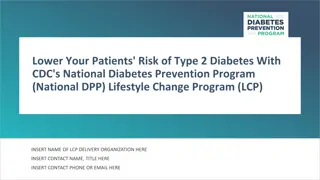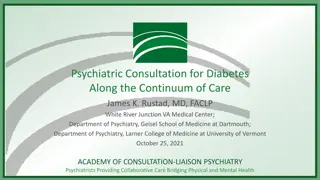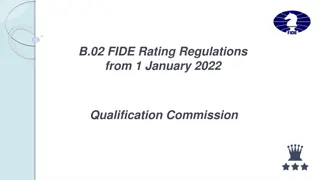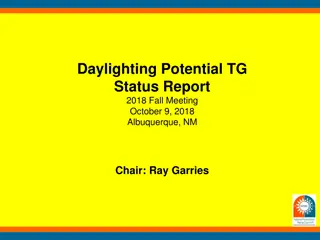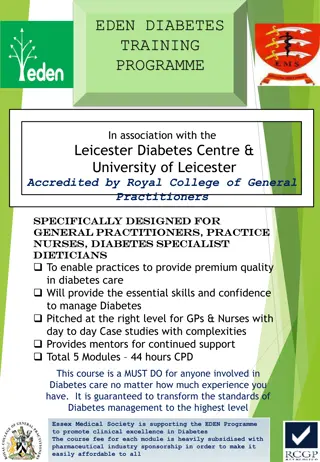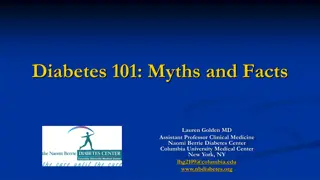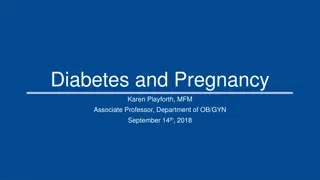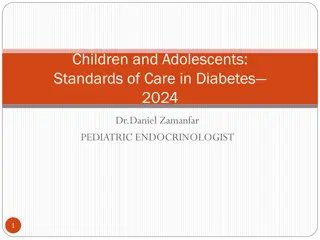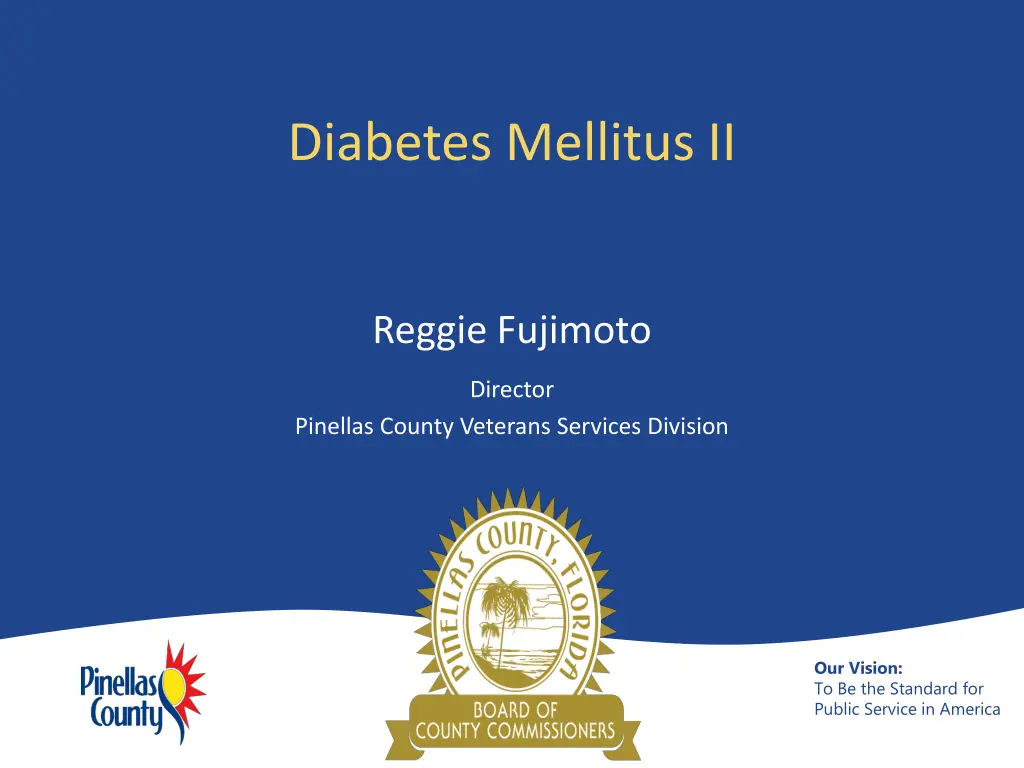
Chronic Complications of Diabetes Mellitus II
Learn about the chronic complications of Type II Diabetes Mellitus, including microvascular issues affecting small blood vessels such as retinopathy, neuropathy, and nephropathy. Discover the impact on various organs and how to manage these conditions for better health outcomes.
Download Presentation

Please find below an Image/Link to download the presentation.
The content on the website is provided AS IS for your information and personal use only. It may not be sold, licensed, or shared on other websites without obtaining consent from the author. If you encounter any issues during the download, it is possible that the publisher has removed the file from their server.
You are allowed to download the files provided on this website for personal or commercial use, subject to the condition that they are used lawfully. All files are the property of their respective owners.
The content on the website is provided AS IS for your information and personal use only. It may not be sold, licensed, or shared on other websites without obtaining consent from the author.
E N D
Presentation Transcript
Diabetes Mellitus II Reggie Fujimoto Director Pinellas County Veterans Services Division Our Vision: To Be the Standard for Public Service in America
Complications/Residuals of Adult-onset (Type-II) Diabetes The complications of adult-onset diabetes mellitus (DC 7913) are the same regardless of the cause of the illnesses. Over time high sugar levels in the blood may cause damage: Eyes - is the leading cause of adult blindness Kidneys - end-stage renal disease Nervous System - non-traumatic lower-extremity amputation as a result of nerve disease Heart - More than likely to have coronary heart disease and stroke than people without diabetes. Type II diabetes is associated with long-term complications that threatened life and the quality of life.
Rating Chronic Complications of Diabetes Mellitus Microvascular Complications 3
Objective To provide background on medical information and rating guidelines associated with chronic microvascular complications Mellitus and clarify existing policy in Rating Decisions by the VA. of Diabetes 4
References 38 CFR Part 4, Schedule for Rating Disabilities 4.26 bilateral factor 4.79 eyes 4.115a urinary 4.115b renal 4.119 diabetes mellitus 4.124a peripheral nerves M21-1MR, Part III. Subpart iv.6.B.3 M21-1 MR, Part IV. Subpart ii.2.H.36 VBA Training Letters 00-06, 09-03 VBA Fast Letters 06-21, 08-12, 09-10 5
Internet Resources http://diabetes.niddk.nih.gov/populations/index.htm http://www.diabetes.org/living-with-diabetes/complications/ http://www.wrongdiagnosis.com/s/sexual_neuropathy http://www.diabetes.niddk.nih.gov/dm/pubs/statistics/ http://www.cdc.gov/diabetes/statistics/complications_national.htm http://www.diabetesnet.com/diabetes_complications/ http://www.healthinsite.gov.au/topics/Complications_of_Diabetes/ http://www.diabetes.usyd.edu.au/foot/ http://www.merck.com/mmhe/sec13/ch165/ch165a.html 6
Chronic Complications of Diabetes Mellitus Microvascular pertaining to small blood vessels, including capillaries Known microvascular complications of diabetes mellitus: Retinopathy eye Neuropathy nerves Nephropathy kidney 7
Eye Problems Retinopathy - damage or growth problems in the small blood vessels of the retina Cataracts thickening and clouding of lens of eye Glaucoma pressure build- up inside the eye 8
Retinopathy Symptoms Blurry or double vision Rings, flashing lights or blank spots Dark or floating spots Pain or pressure in one or both eyes Trouble seeing things out of the corners of the eyes Fact: Diabetic retinopathy causes 12,000-24,000 new cases of blindness each year in the US 9
Cataract Symptoms Clouded, blurred or dim vision Increasing difficulty with vision at night Sensitivity to light and glare Double vision of a single eye Fading or yellowing of colors Halos around lights Fact: Diabetics are twice as likely to get cataracts as non-diabetics 11
Normal Vision/Cataracts Cataracts 12
Glaucoma Symptoms Primary open-angle Gradual loss of peripheral vision, usually in both eyes Tunnel vision in advanced stages Acute angle-closure Severe eye pain (nausea and vomiting) Sudden onset of visual disturbance Halos around lights Blurred vision Reddening of the eye 13
Normal Vision/Glaucoma Glaucoma 14
Tests for Eye Problems Refraction Test measures ability to see objects at specific distances Fluorescein Angiogram evaluates blood circulation in the retina Tonometry measures intraocular pressure Pupillary Dilation Test expands pupil to examine retina for signs of disease Slit-Lamp Exam looks at the front of the eye by shining a beam of light shaped like a small slit on the eye 15
Refraction Test The Snellen Eye Chart measures how well you see at various distances 16
Visual Field Exam * See FL 06-21, TL 09-03 Goldmann kinetic perimetry and automated perimetry* evaluate central and peripheral visual fields. Test results must be recorded and interpreted based on a Goldmann chart (above) 17
Slit-Lamp Exam A slit-lamp allows the examiner to evaluate the structures of the eye including the cornea, iris, vitreous and retina 18
Extraocular Muscle Function Test An extraocular muscle function test evaluates muscle weakness or other defects that result in uncontrolled eye movement 19
Types of Diabetic Retinopathy Non-proliferative (background, or simple retinopathy) Retinal vein occlusion (below left) occurs when the central retinal vein, the blood vessel that drains the retina, or one of its branches becomes blocked Microaneurysms Hemorrhages Hard exudates Proliferative Scarring Hemorrhaging Formation of new blood vessels in retina Cotton wool spots (above right) are white areas in the retina where blood vessels are blocked and nerves are damaged 20
Reviewing C&P Eye Exams Only licensed optometrists and ophthalmologists may conduct C&P eye examinations A diagnosis is required when there are abnormal findings A fundoscopic examination after dilation of the pupils is routine, unless medically contraindicated Examinations of visual fields or muscle function are needed only when medically indicated (or when specially requested, such as on a BVA remand) 21
Rating Considerations Diabetic eye diseases are rated as glaucoma, cataract, retinopathy or other manifestation (such as intra-ocular hemorrhage) based on impairment of: visual acuity visual field muscle function Some eye disabilities result in more than one type of impairment (See TL 09-03). 22
Rating Considerations Take the issue of service connection for diabetic retinopathy as an inferred issue when: the veteran is already service connected for diabetes medical evidence of record provides a diagnosis Further examination may be needed to ascertain the extent of involvement, but VA may assign 0% evaluation pending that exam 23
Nerve Damage Peripheral neuropathy Affects nerves in upper and lower extremities Progressive, develops slowly Focal neuropathies Affects specific nerves in head, torso, or legs Appears suddenly, but usually gets better over time Autonomic neuropathy Affects many body systems (digestive, cardiovascular, genitourinary) 24
Symptoms of Nerve Damage Distal symmetric/diffuse polyneuropathy (peripheral neuropathy) Tingling, numbness, tightness, or burning, shooting, or stabbing pain in the feet, hands, or other parts of the body that often occurs in a stocking-glove distribution Bone and joint deformities Charcot s joints (degenerative changes, instability, fragmentation of bones) Reduced sensitivity to light touch or temperature Injuries or burns Weakness and loss of balance or coordination Abnormalities of gait sensory ataxia 25
Symptoms of Nerve Damage Focal (mononeuropathy) Localized pain, weakness and motor problems Pain in or around one of the eyes, difficulty moving eye Facial paralysis - Bell s palsy Sudden wrist or foot drop Focal (radiculopathy) Spinal nerve root Focal (compression neuropathy) entrapment syndromes Carpal tunnel Fact: About 60 to 70 percent of people with diabetes have mild to severe forms of nervous system damage 26
Symptoms of Nerve Damage Autonomic neuropathy Digestive delayed gastric emptying due to vagus nerve involvement causes frequent bloating, belching, constipation, heartburn, nausea and vomiting, diarrhea, and abdominal pain Dumping syndrome Gastroparesis Cardiovascular decreased cadiac sensation of angina Orthostatic hypotension (low blood pressure) with syncope (fainting) Skin (sweat glands) - profuse sweating of the torso, face, or neck; or reduced sweating of feet or legs Urinary tract difficulty sensing when bladder is full Sexual dysfunction loss of erections or vaginal dryness 27
Tests for Nerve Damage Deep tendon reflexes/muscle strength provide information on the integrity of the central and peripheral nervous system Sensation testing measures the ability to detect temperature, light touch, sharp and dull pressure, and vibration Electromyogram (EMG) measures the electrical activity of muscles at rest and during contraction Nerve Conduction Velocity (NCV) measures how quickly electrical impulses move along a nerve 28
Reflex, Strength and Sensation Typically, physicians assess neurological function by evaluating deep tendon reflexes, muscle strength, and sensation (temperature, light touch, sharp and dull pressure, and vibration) 29
EMG A needle is inserted through the skin into the muscle. Electrical activity is detected by the needle. Activity is displayed visually on an oscilloscope. The presence, size, and shape of the wave provide information about the ability of the muscle to respond to stimulation. 30
NCV Surface electrodes are placed on the skin over nerves at various locations Each patch gives off a very mild electrical impulse stimulating the nerve Electrical activity is recorded by other electrodes Distance is measured between electrodes and the time it takes for impulses to travel 31
Rating Considerations Diagnostic criteria are based on some combination of symptoms and a focused neurological examination. Nerve conduction studies and special quantitative sensory tests are not routinely done during a C&P examination but may be ordered in certain circumstances. 32
Kidney Disease Diabetic nephropathy damage to the blood vessels in the kidneys caused by diabetes Fact: Diabetes is the leading cause of kidney failure, accounting for 44 percent of new cases in 2005 33
5 Stages of Nephropathy I. II. Silent stage gradually damaged nephrons Microalbuminuria albumin, a type of protein, in the urine), in the range of 30-300 mg/24 h Clinical albuminuria or proteinuria diabetes for 5+ yrs and clinically apparent albuminuria (>300 mg per 24 hrs) w/no other cause of kidney disease Renal insufficiency rising blood creatinine 2 mg/dL or greater End-stage renal disease (ESRD) may require hemodialysis or kidney transplant III. IV. V. 34
Symptoms of Nephropathy Early stages have no symptoms (Stage I) Progressive loss of kidney function (Stages II- IV) Swelling in legs (edema) Poor appetite/weight loss Weakness Fatigue/trouble sleeping End-stage renal disease (Stage V) Reduced urine output Uremia Mental confusion Nausea, vomiting 35
Tests for Kidney Complications Blood Urea Nitrogen (BUN) Reference range for an adult is 7-20 mg/dL, Increased levels suggest impaired kidney function Levels can increase with the amount of protein in your diet Concentrations may be elevated when there is excessive protein breakdown (catabolism) If one kidney is fully functional, BUN concentrations may be normal even when significant dysfunction is present in the other kidney 36
Tests for Kidney Complications Creatinine Measured in blood or urine Reference range for blood 0.6 - 1.2 mg/dL No reference range for urine (measured by ratio) Increased levels in blood suggest damage to/swelling of blood vessels in kidneys due to infection or disease Concentrations in blood can increase temporarily as a result of muscle injury Concentrations in blood are slightly lower during pregnancy 37
Tests for Kidney Complications Creatinine Clearance Measures how fast creatinine leaves the blood Reference range is 97-137 ml/min for men, 88-128 ml/min for women Microalbuminuria Occurs when kidney leaks small amounts of albumin into urine (albumin is normally retained in the bloodstream by the kidneys) Detected by urine dipstick methods Diagnosed either from a 24-hour urine collection (20 to 200 g/min) or from elevated concentrations (30 to 300 mg/L) on at least two occasions 38
Tests for Kidney Complications Proteinuria Occurs when damaged kidneys fail to separate protein from waste products Urinary casts Tube-shaped particles made up of white blood cells, red blood cells, and kidney cells Held together by a protein released by the kidney Types of casts: granular fatty/waxy hyaline renal tubular epithelial red blood cell white blood cell 39
Rating Considerations Even in the incipient stage, diabetic nephropathy is associated with renal hypertension, which is the most common cause of the hypertension that results from diabetes nephropathy, and is manifested by: persistent microalbuminuria, which is characterized by urinary excretion of 150-500 mg of protein/24 hours, and overt proteinuria, which is characterized by urinary excretion of greater than 0.5 mg protein/24 hours 40
General Rating Considerations Evaluate compensable complications of diabetes separately unless they are a part of the criteria used to support a 100 percent evaluation Noncompensable complications are considered part of the diabetic process under diagnostic code (DC) 7913 41
General Rating Considerations If a veteran has noncompensable complications of diabetes mellitus but does not have ketoacidosis or hypoglycemic reactions, do not evaluate the diabetes mellitus at 60 percent simply because noncompensable complications are present. Assign a 40 percent evaluation if there is a requirement of insulin, restricted diet, and regulation of activities and include the noncompensable complications under DC 7913. 42
Rating Chronic Complications of Diabetes Mellitus Macrovascular Complications 43
More Chronic Complications of Diabetes Mellitus Known macrovascular complications of diabetes mellitus: Heart problems Hypertension Peripheral vascular disease Stroke 44
Macrovascular Complications Acute (sudden) events due to chronic disease: heart attack is caused by blockage of blood vessels supplying the heart, and stroke is caused by blockage of blood vessels supplying the brain. Fact: Heart disease or stroke account for about 65% of deaths in people with diabetes 45
Arteriosclerotic Heart Disease also known as coronary artery disease (CAD) caused by plaque build up on the walls of arteries, making them narrow as coronary arteries narrow, blood flow to the heart can slow down or stop, causing chest pain (stable angina) or heart attack Fact: Diabetic adults have heart disease death rates about 2 to 4 times higher than non-diabetics 46
Heart Attack also known as myocardial infarction (MI) blockage of a coronary artery deprives heart muscle of blood and oxygen, injuring it causes chest pain and chest pressure sensation if blood flow is not restored within 20 to 40 minutes, irreversible death of the heart muscle will occur muscle continues to die for six to eight hours at which time the heart attack usually is complete dead heart muscle is replaced by scar tissue 47
Symptoms of Heart Attack discomfort, pressure, fullness, squeezing or pain in the center of the chest pain spreading to the shoulders, neck or arms lightheadedness, fainting, sweating, nausea or shortness of breath anxiety, nervousness increased or irregular heart rate feeling of impending doom 48
Tests for Heart Complications Metabolic Equivalent of Task (METS) determines if there are abnormalities in the heart s electrical activity by measuring the metabolic rate on cardiac stress test Ejection Fraction measures the fraction of blood pumped out of the left ventricle with each heart beat Electrocardiogram (ECG) checks for problems with the electrical activity of the heart 49
METS The Bruce protocol stress test is a non-invasive procedure that involves walking on a treadmill while the heart is monitored by an electrocardiograph with various electrodes attached to the body 50


